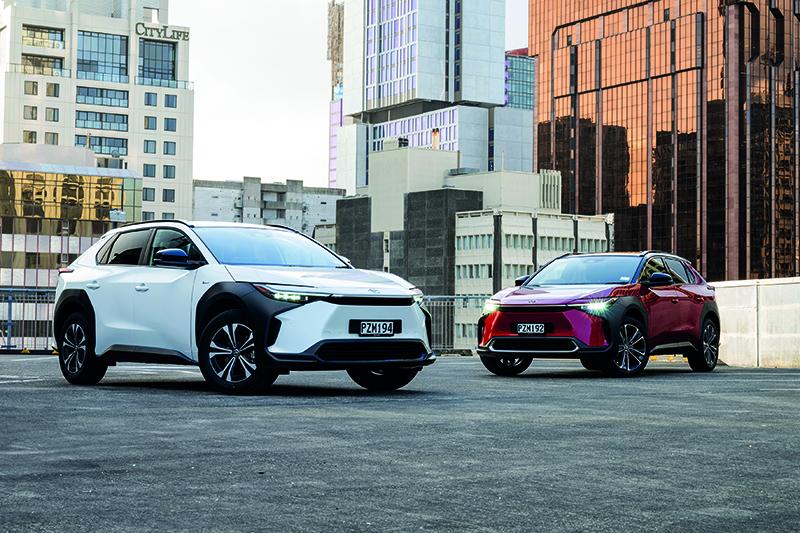The much-anticipated arrival of the all-electric Toyota bZ4X in New Zealand has been met with a sense of familiarity. For not only does this all-electric SUV align with Toyota’s commitment to innovation and sustainability, but it offers a driving experience that’s intuitive and very Toyota – although the name doesn’t exactly roll off the tongue.
The uncommon moniker encapsulates Toyota’s vision for a sustainable future. The “b” signifies beyond conventional limits, while the “Z” represents zero-impact, emphasising the brand’s commitment to reducing environmental harm. The “4” references its category size, and the “X” says it’s a crossover.
Developed in collaboration with Subaru, the bZ4X is based on the e-TNGA platform, specially designed for electric vehicles. New Zealand offers two variants: the Pure, a single motor FWD option, and the Motion, a fully loaded two-motor AWD.
Both variants house a slim yet high-capacity 71.4kWh battery pack, with an estimated driving range of 535km for the Pure model and 485km for the Motion variant and compatible with 150 kW DC fast chargers too. The bZ4X is also the first Toyota vehicle to adopt eAxle technology, which integrates the transaxle, motor generator, and inverter into a single unit. This system delivers 150 kW of power to the front wheels (Pure), and 160 kW to both front and rear wheels in the Motion.
Chief Engineer Uchiyama believes that the bZ4X is a true SUV, saying that his team have put the bZ4X through rigorous off-road testing to showcase its versatility beyond urban environments. “The addition of X-Mode, means that this electric vehicle can handle challenging terrains and rugged conditions,” he told us.
Visually, the bZ4X showcases Toyota’s dedication to aerodynamics and efficiency. Its futuristic design features a grille-free face and distinct 4-eye LED headlights, while the rear boasts full-width LED taillights and an angled rear window. The Pure variant rides on 18-inch alloys, while the Motion has 20-inch wheels and a split panoramic roof. Both models are available in a wide range of colours, including a two-tone option for added personalisation.
The cabin is both comfortable and technologically advanced. The Pure features a fabric and synthetic leather accented interior trim, while the Motion introduces synthetic leather upholstery. The Motion adds luxuries such as a heated steering wheel, driver’s seat memory function, and front seat ventilation. The centrepiece of the interior is the large 12.3-inch high-resolution touchscreen, with satellite navigation, and Apple CarPlay/Android Auto through both USB and wireless interfaces. The Pure is equipped with a six-speaker system, while the Motion boasts a premium nine-speaker JBL system, including a subwoofer.
Oddly there isn’t a glove box, instead there’s a more efficient heat pump (rather than a traditional AC unit) and in turn enhances the EV’s overall range.
What immediately stands out is the bZ4X’s ease of use and its innate Toyota-like characteristics, brand fans will find it very familiar. And while Chief Engineer Masaya Uchiyama held back on revealing too many details about future bZ projects, he did say that differences between the bZ4X and the Subaru counterpart lie primarily in the bZ4X’s softer and smoother ride – and he’s not wrong.
As expected, the bZ4X prioritises safety, featuring an array of driver aids and earning a five-star ANCAP safety rating.






